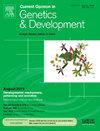父亲的线粒体DNA为何以及如何从遗传中被剔除
IF 3.6
2区 生物学
Q2 CELL BIOLOGY
引用次数: 0
摘要
线粒体DNA (mtDNA)是通过母系遗传的,但这种不寻常的遗传模式背后的进化原理仍然是一个长期的谜。了解阻止父系mtDNA传播的过程,从而确保仅由母系遗传,对于揭示这一普遍现象的进化意义至关重要。从历史上看,研究主要集中在卵子内通过自噬和泛素-蛋白酶体降解系统破坏精子线粒体的机制。然而,最近在包括人类在内的多种动物物种中的发现揭示了一个令人惊讶的转折:父系mtDNA在线粒体内的主动降解独立于细胞器本身完全分解之前,甚至在受精之前。只有少数研究已经开始阐明负责这种早期mtDNA消除的分子机制。在这篇综述中,我们探讨了跨物种父系mtDNA消除机制的新兴景观,重点介绍了新发现的途径、进化意义和开放性问题,这些问题正在进一步加深我们对线粒体遗传的理解。本文章由计算机程序翻译,如有差异,请以英文原文为准。
Why and how paternal mitochondrial DNA gets cut out of the inheritance
Mitochondrial DNA (mtDNA) is inherited maternally across animals, yet the evolutionary rationale behind this unusual mode of inheritance remains a longstanding mystery. Understanding the processes that prevent the transmission of paternal mtDNA and thus ensure maternal-only inheritance is crucial to uncovering the evolutionary significance of this widespread phenomenon. Historically, research has focused on mechanisms that act within eggs to destroy sperm mitochondria via autophagy and the ubiquitin-proteasome degradation system. However, recent discoveries across multiple animal species, including humans, reveal a surprising twist: paternal mtDNA is actively degraded within mitochondria independently of and prior to the complete breakdown of the organelle itself, often even prior to fertilization. Only a few studies have begun to illuminate the molecular machinery responsible for this early mtDNA elimination. In this review, we explore the emerging landscape of paternal mtDNA elimination mechanisms across species, highlighting newly discovered pathways, evolutionary implications, and open questions that are furthering our understanding of mitochondrial inheritance.
求助全文
通过发布文献求助,成功后即可免费获取论文全文。
去求助
来源期刊
CiteScore
7.90
自引率
0.00%
发文量
102
审稿时长
1 months
期刊介绍:
Current Opinion in Genetics and Development aims to stimulate scientifically grounded, interdisciplinary, multi-scale debate and exchange of ideas. It contains polished, concise and timely reviews and opinions, with particular emphasis on those articles published in the past two years. In addition to describing recent trends, the authors are encouraged to give their subjective opinion of the topics discussed.
In Current Opinion in Genetics and Development we help the reader by providing in a systematic manner:
1. The views of experts on current advances in their field in a clear and readable form.
2. Evaluations of the most interesting papers, annotated by experts, from the great wealth of original publications.[...]
The subject of Genetics and Development is divided into six themed sections, each of which is reviewed once a year:
• Cancer Genomics
• Genome Architecture and Expression
• Molecular and genetic basis of disease
• Developmental mechanisms, patterning and evolution
• Cell reprogramming, regeneration and repair
• Genetics of Human Origin / Evolutionary genetics (alternate years)

 求助内容:
求助内容: 应助结果提醒方式:
应助结果提醒方式:


